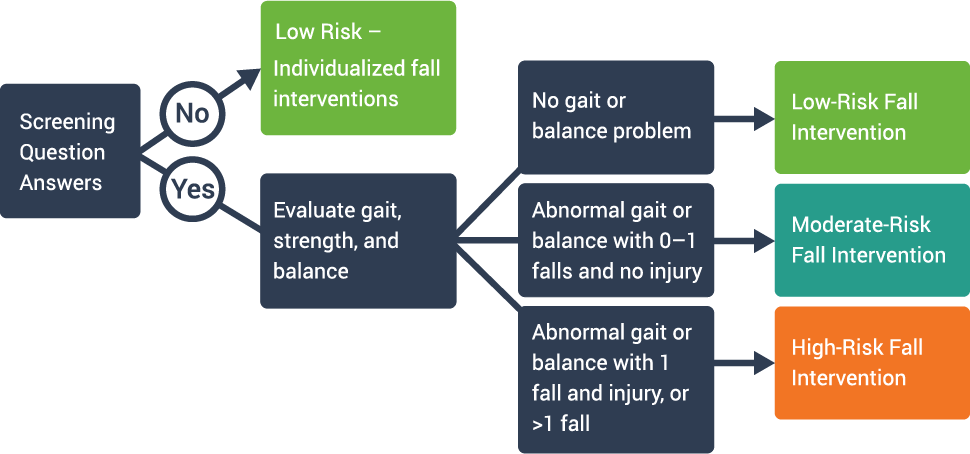STEADI Algorithm for Fall Risk Assessment

If your patient answers “yes” to any of the key screening questions, they are considered at increased risk of falling
Low Risk
Educate patient, consider vitamin D/calcium, refer for strength and balance community-based exercise programs:
- be progressive (get more challenging over time)
- be practiced for ≥50 hours
- a 1-hour class 3 times a week for 4 months, or
- a 1-hour class 2 times a week for 6 months
- Tai Chi proven to lower falls 10–20%!
Moderate Risk
- educate patient
- review/modify medications
- refer to PT to improve balance and gait
- consider community-based fall prevention program
High Risk
Moderate risk protocol PLUS:
- assess home environment/improve safety
- assess for hypotension
- optimize vision and footwear
- create formal care plan that addresses barriers to adherence
- and follow-up within 30 days
NOTE
These recommendations are for all healthcare providers, but what about in the busy ED? And do these questions predict outcomes?
One study that examined whether responses to the STEADI questions predicted AEs after older-adult ED fall visits found that a high score alone did not predict adverse outcomes, but that some questions were associated with AEs at 6 months. Questions that predicted recurrent falls included “Had previous fall,” “Feels unsteady when walking sometimes,” and “Lost some feeling in their feet.”
References
Sri-On J et al. Acad Emerg Med. 2018;25(10):13413.
Abbreviations
AE, adverse event; ED, emergency department; PT, physical therapy.
STEADI, Stopping Elderly Accidents, Deaths & Injuries.
